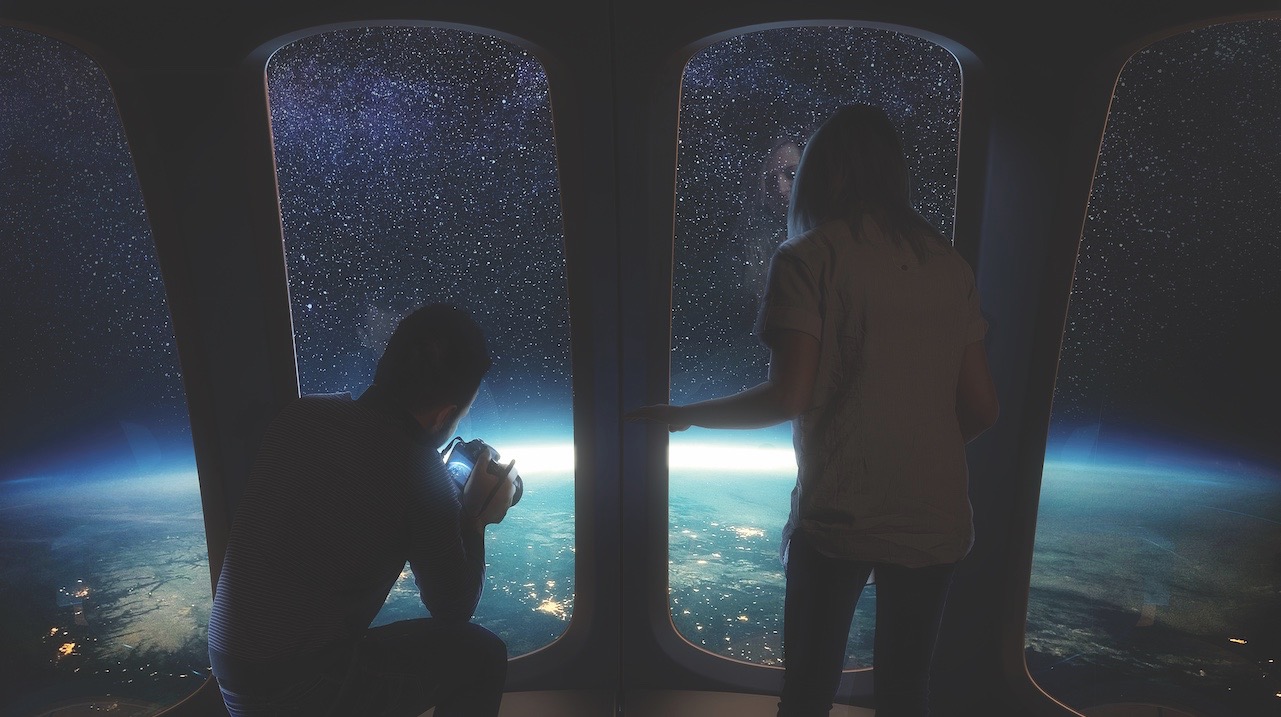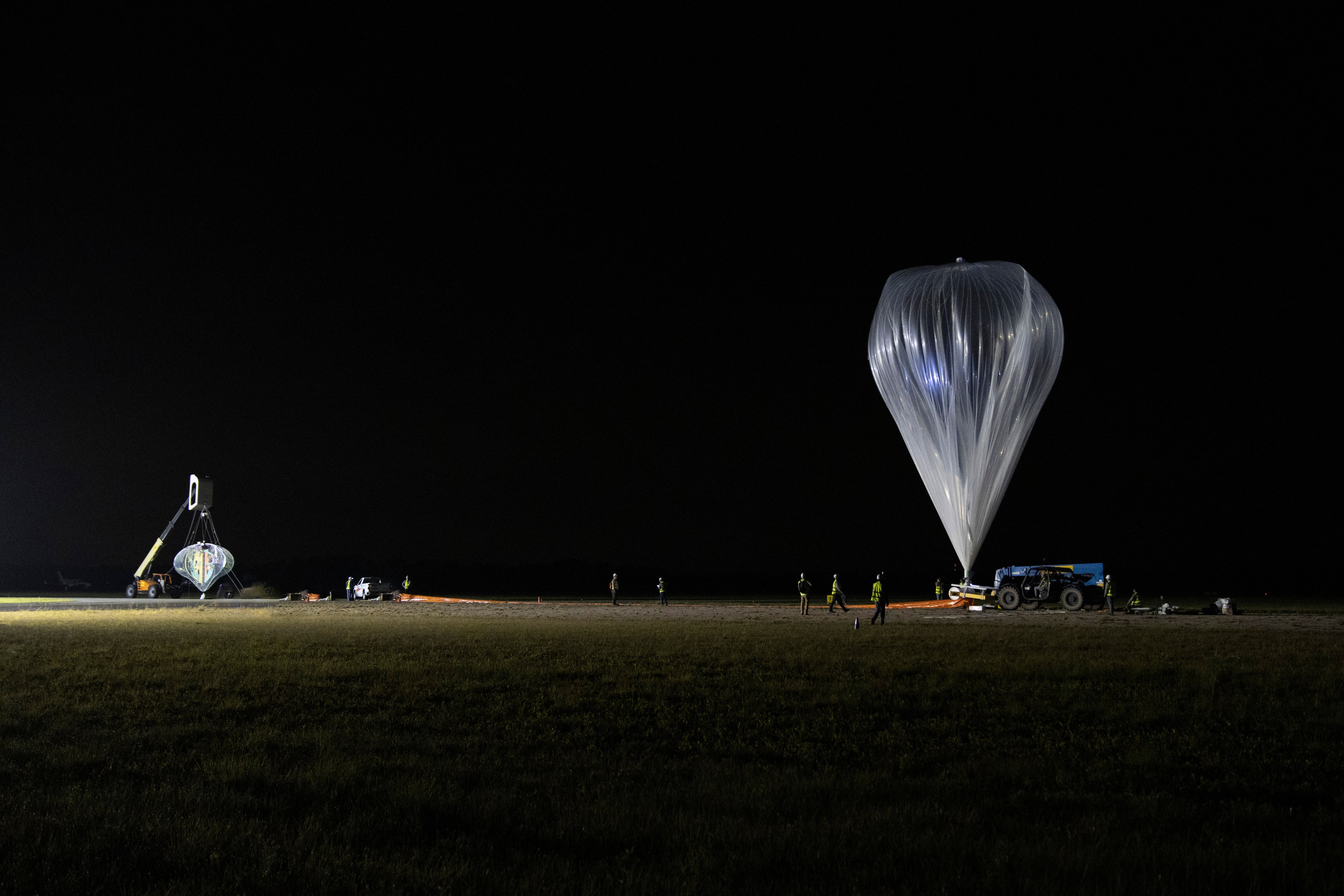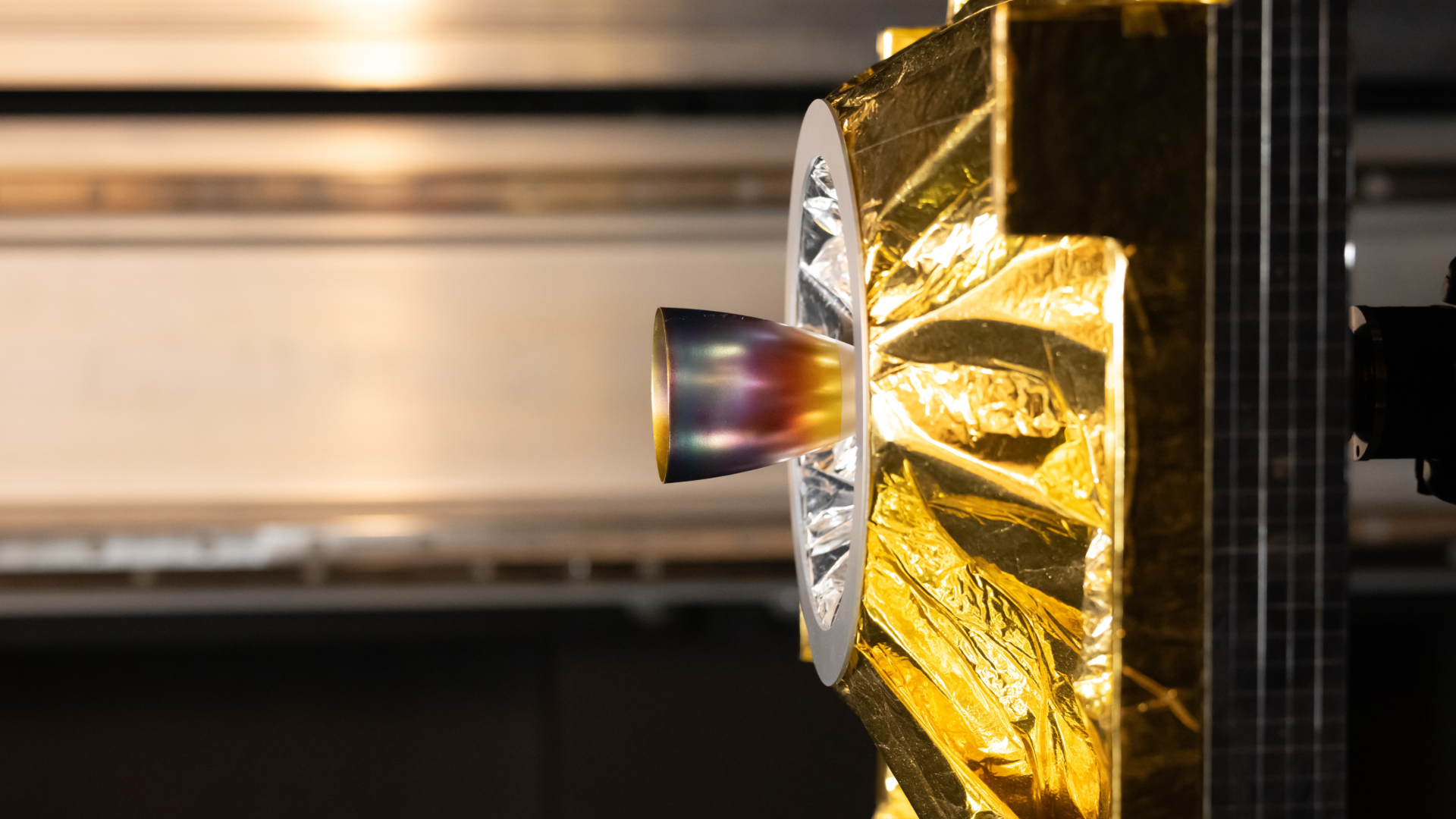Space Perspective starts selling seats for balloon rides to stratosphere

You can now book a seat on a balloon ride to the stratosphere — if you've got pretty deep pockets.
Florida-based company Space Perspective has started accepting seat reservations for its "Spaceship Neptune," a balloon-borne pressurized capsule designed to carry eight passengers and one pilot to an altitude of 100,000 feet (30,000 meters). The price: $125,000 per seat.
Spaceship Neptune passengers will spend about six hours aboard the capsule during their flights, which will take them above 99% of Earth's atmosphere and show our planet against the blackness of space.
The experience will be low-impact and relatively luxurious, Space Perspective representatives say. Because the capsule is lofted by a giant balloon, the ascent is gentle, with none of the high G-forces associated with rocket launches. And Spaceship Neptune will feature reclining seats, panoramic windows, a refreshments bar and a bathroom, among other amenities.
Related: Photos: The first space tourists
Test flight, too
Space Perspective aims to begin commercial operations by the end of 2024. The company took a big step toward achieving that goal last Friday (June 18), launching its first test flight from the Space Coast Spaceport in Florida, which is next door to NASA's Kennedy Space Center.
The uncrewed flight, which used a full-size Spaceship Neptune simulator, lasted six hours and 39 minutes. It reached a maximum altitude of 108,409 feet (33,043 m) and splashed down as planned in the Gulf of Mexico, about 50 miles (80 kilometers) off Florida's west coast, Space Perspective representatives said.
Breaking space news, the latest updates on rocket launches, skywatching events and more!
"I could not be more proud of the performance of the team and the flight system," Space Perspective co-CEO and co-founder Taber MacCallum said in a statement.
"This test flight of Neptune One kicks off our extensive test flight campaign, which will be extremely robust because we can perform tests without a pilot, making Spaceship Neptune an extremely safe way to go to space," he added. (To clarify: The capsule does not technically reach space, the boundary of which is regarded to lie either 50 miles or 62 miles above Earth's surface, depending on whom you ask.)
The June 18 test flight carried a number of scientific payloads, company representatives said. Among the experiments were the winning entries of a science project competition for seventh- through 12th-grade students organized by the educational nonprofit Higher Orbits and an ozone-sensing instrument developed by researchers at the University of Northern Florida.
Also on the flight was "Living Light," which Space Perspective said was the largest art installation ever to travel so high above Earth.
Living Light, which was developed by the artist collective Beyond Earth, "echoed the shape of the capsule which will eventually transport Explorers to space, and adopted the appearance of a jellyfish," Space Perspective wrote in a description of the project. "The installation represented a shared mission to amplify the essential biodiversity and interdependency of all living organisms — specifically hidden ocean life — rarely included in the story of life on planet Earth."
Space tourism competition
Space Perspective will vie for customers against other space tourism outfits, chiefly Virgin Galactic and Jeff Bezos' Blue Origin. Those two companies have both built suborbital spacecraft, which will take passengers much higher than Spaceship Neptune does but on much shorter flights. A ride on Blue Origin's New Shepard vehicle, for example, will last just 11 minutes from liftoff to landing.
The prices may differ a bit as well. For example, Virgin Galactic's most recently stated price for a ride on its six-passenger, two-pilot VSS Unity space plane was $250,000.
Blue Origin has not announced ticket prices yet. The company did just auction off a seat on its first crewed spaceflight, which is scheduled to lift off on July 20, for $28 million. But that's very much a premium price; someone paid a lot to be a part of history and to rub elbows with Bezos, who will be on the flight as well.
Like Blue Origin, Virgin Galactic aims to start flying customers soon. VSS Unity conducted its third test flight to suborbital space last month, and Virgin Galactic representatives have said the company aims to wrap up the vehicle's test-flight campaign this summer or early fall.
Mike Wall is the author of "Out There" (Grand Central Publishing, 2018; illustrated by Karl Tate), a book about the search for alien life. Follow him on Twitter @michaeldwall. Follow us on Twitter @Spacedotcom or Facebook.

Michael Wall is a Senior Space Writer with Space.com and joined the team in 2010. He primarily covers exoplanets, spaceflight and military space, but has been known to dabble in the space art beat. His book about the search for alien life, "Out There," was published on Nov. 13, 2018. Before becoming a science writer, Michael worked as a herpetologist and wildlife biologist. He has a Ph.D. in evolutionary biology from the University of Sydney, Australia, a bachelor's degree from the University of Arizona, and a graduate certificate in science writing from the University of California, Santa Cruz. To find out what his latest project is, you can follow Michael on Twitter.


